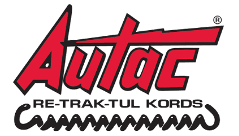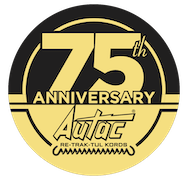In modern electrical, electronic, and industrial setups, coiled cables—also known as retractile or spiral cords—play an essential role in connecting devices that require flexibility, durability, and movement. These cables are designed to stretch and retract without tangling or breaking, making them ideal for dynamic environments such as factories, medical equipment, vehicles, and communication systems.
However, selecting the right coiled cable is not just about length or color—it involves understanding factors like conductor material, insulation type, coil design, and the application environment. This detailed guide will help you learn how to choose the perfect coiled cable for your specific needs, covering everything from design considerations to performance advantages.
What Is A Coiled Cable?
Choosing a coiled cable is an electrical wire shaped into a spring-like spiral. This unique shape allows the cable to extend several times its contracted length and automatically retract when not in use. The design minimizes clutter and protects the wire from damage caused by bending or twisting.
Unlike straight cables, coiled cables are engineered to handle continuous flexing and stretching. This makes them highly reliable in environments where cables must move with connected equipment—such as robotics, medical devices, and telecommunication systems.
How Coiled Cables Work
The coiled shape acts as a mechanical spring, allowing the cable to expand and contract without applying strain on the internal conductors. When stretched, the cable extends linearly; when released, it recoils back into its compact spiral form.
This flexible movement is achieved through:
-
Elastic insulation materials such as polyurethane (PUR) or thermoplastic elastomer (TPE).
-
Proper conductor design using fine-stranded copper to increase flexibility.
-
Careful coil geometry, which ensures even tension and avoids cable fatigue.
In short, coiled cables combine electrical performance with mechanical resilience—making them both space-efficient and durable.
Applications Of Coiled Cables
Coiled cables are widely used in industries that demand flexibility and reliability. Some common applications include:
1. Industrial Automation
Used for robotic arms, conveyor systems, and moving machinery where the cable must follow repetitive motion without tangling.
2. Medical Equipment
Provides flexibility and clean design for hospital devices such as ECG monitors, diagnostic tools, and surgical instruments.
3. Automotive and Transportation
Used in vehicles for trailer connections, charging systems, and retractable power cords.
4. Telecommunications
Ideal for telephone handsets, headset cords, and radio communication devices.
5. Consumer Electronics
Seen in charging cables, audio connectors, and coiled power cords for household appliances.
6. Military and Aerospace
Used where durability, resistance to temperature extremes, and reliability are critical.
Types Of Coiled Cables
Choosing the right type of coiled cable depends on your application, voltage, and environmental conditions. Below are the major categories:
1. Power Coiled Cables
Designed to carry electrical power between devices. They have thicker conductors and insulation to handle higher current loads.
2. Data Coiled Cables
Used for signal and data transmission, such as Ethernet, USB, or audio cables. These cables are shielded to minimize electromagnetic interference (EMI).
3. Hybrid Coiled Cables
Combine both power and data conductors in one spiral assembly. Common in advanced industrial equipment and medical devices.
4. Extension Coiled Cords
Used for extendable connections like phone handsets or retractable tools. These cables prioritize flexibility over power capacity.
5. Heavy-Duty Coiled Cables
Designed for harsh environments, featuring reinforced jackets and insulation to resist oil, moisture, and abrasion.
Key Factors To Consider When Choosing A Coiled Cable
Selecting a coiled cable involves more than just matching voltage ratings. Here are the most important factors to evaluate:
1. Application Requirements
First, determine where and how the cable will be used:
-
For indoor use: Standard PVC or PUR insulation may suffice.
-
For outdoor or industrial use: Opt for UV, oil, or chemical-resistant materials.
-
For motion-intensive use: Choose cables designed for continuous flexing.
2. Cable Length And Extension Ratio
The extension ratio defines how far the coiled cable can stretch compared to its retracted length. For example:
-
A 1-meter coiled cable may extend up to 4 meters when stretched.
Choose an appropriate length based on your required reach but avoid overstretching, which can reduce lifespan.
3. Conductor Material
Most coiled cables use copper conductors for excellent conductivity and flexibility. However, options include:
-
Tinned copper: Corrosion-resistant and suitable for humid conditions.
-
Bare copper: Economical but less resistant to oxidation.
-
Silver-plated copper: Ideal for high-frequency or temperature-sensitive applications.
4. Insulation And Jacket Material
The insulation protects the conductor from electrical leakage, while the outer jacket shields the cable from mechanical and environmental damage.
Common materials include:
-
PVC (Polyvinyl Chloride): Cost-effective and flexible for general use.
-
PUR (Polyurethane): Resistant to abrasion, oil, and chemicals; best for industrial settings.
-
TPE (Thermoplastic Elastomer): High flexibility and temperature resistance.
-
Silicone: Excellent for medical or high-temperature environments.
5. Coil Design and Pitch
The coil diameter, pitch, and number of turns affect how far the cable can extend and retract.
A tighter coil offers compactness, while a looser coil allows more extension. The right balance ensures smooth retraction without tangling.
6. Voltage and Current Ratings
Always check the electrical specifications. Using a cable with insufficient rating can cause overheating or electrical failure. Match the cable’s voltage rating with your device’s requirements.
7. Shielding
For data or communication cables, shielding is crucial to prevent signal interference.
Options include:
-
Foil shielding: Lightweight and effective for high-frequency noise.
-
Braided shielding: Provides mechanical strength and low resistance.
-
Combined shielding: Offers maximum protection in noisy environments.
8. Environmental Conditions
Consider the operating environment:
-
Temperature range (e.g., -40°C to +90°C).
-
Exposure to chemicals, oils, or UV light.
-
Vibration and movement frequency.
A cable used in a factory setting will have different requirements than one used in an office or medical lab.
Benefits Of Coiled Cables
-
Space Efficiency: Retracts neatly when not in use, reducing clutter.
-
Flexibility: Ideal for applications involving constant motion.
-
Durability: Designed to withstand stretching, twisting, and bending.
-
Tangle-Free: The coiled shape prevents knotting and damage.
-
Customizable: Can be designed to specific lengths, colors, and connectors.
-
Aesthetic Appeal: Sleek, professional appearance suitable for consumer devices.
Common Mistakes To Avoid When Choosing A Coiled Cable
-
Overstretching: Exceeding the maximum extension reduces elasticity and lifespan.
-
Ignoring voltage rating: Can lead to overheating or short circuits.
-
Choosing the wrong insulation: May cause cracking or wear in harsh environments.
-
Poor maintenance: Dirt and oil buildup can damage the coil over time.
Maintenance Tips For Coiled Cables
-
Inspect regularly for signs of wear, cracking, or corrosion.
-
Clean with mild detergents; avoid solvents that degrade insulation.
-
Store in a cool, dry place when not in use.
-
Avoid sharp bends that could damage the conductor strands.
-
Ensure proper strain relief at both ends to prevent breakage.
Conclusion
Choosing a coiled cable involves balancing flexibility, electrical performance, and environmental durability. Whether you need a lightweight spiral cord for communication equipment or a heavy-duty cable for industrial automation, understanding your application’s electrical and mechanical requirements is crucial.
A well-selected coiled cable not only enhances performance but also ensures long-term reliability, safety, and efficiency. Always consult with manufacturers or suppliers for custom options that match your specific needs.




Recent Comments